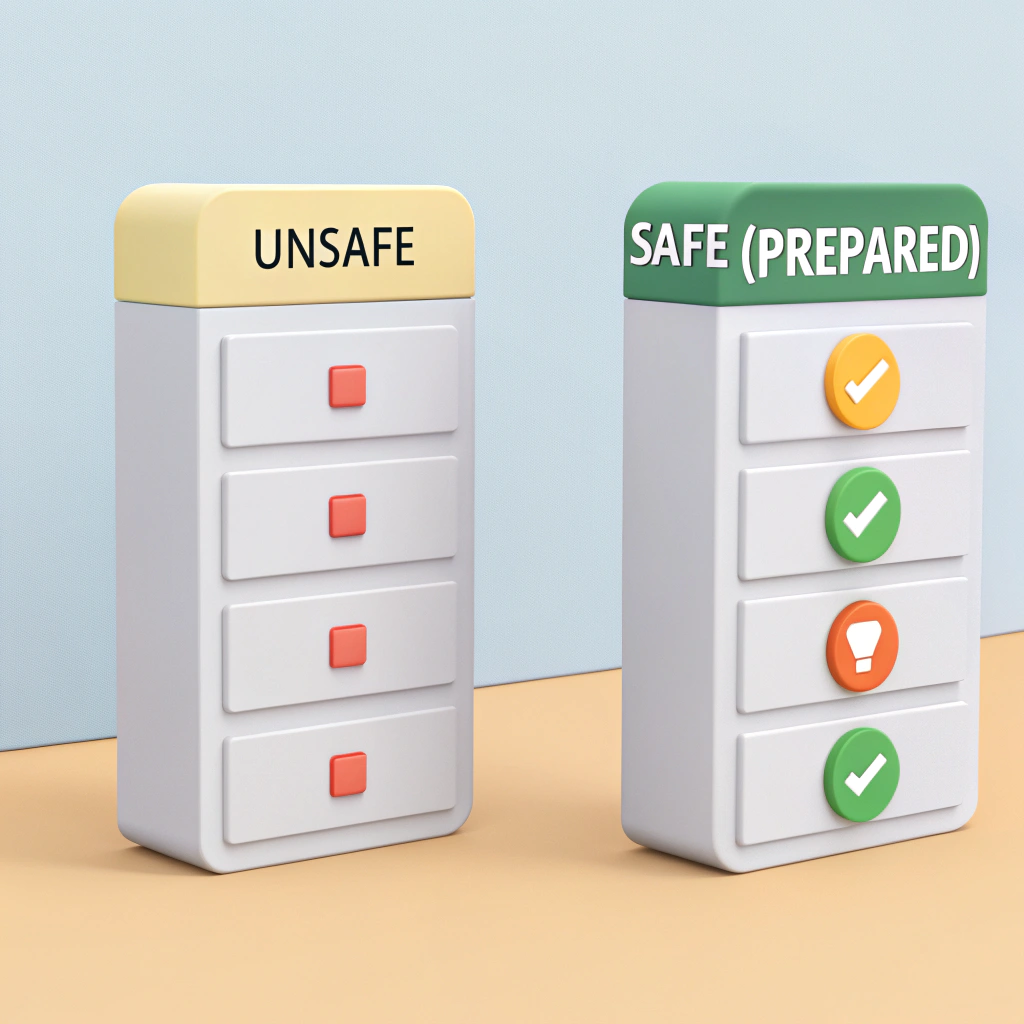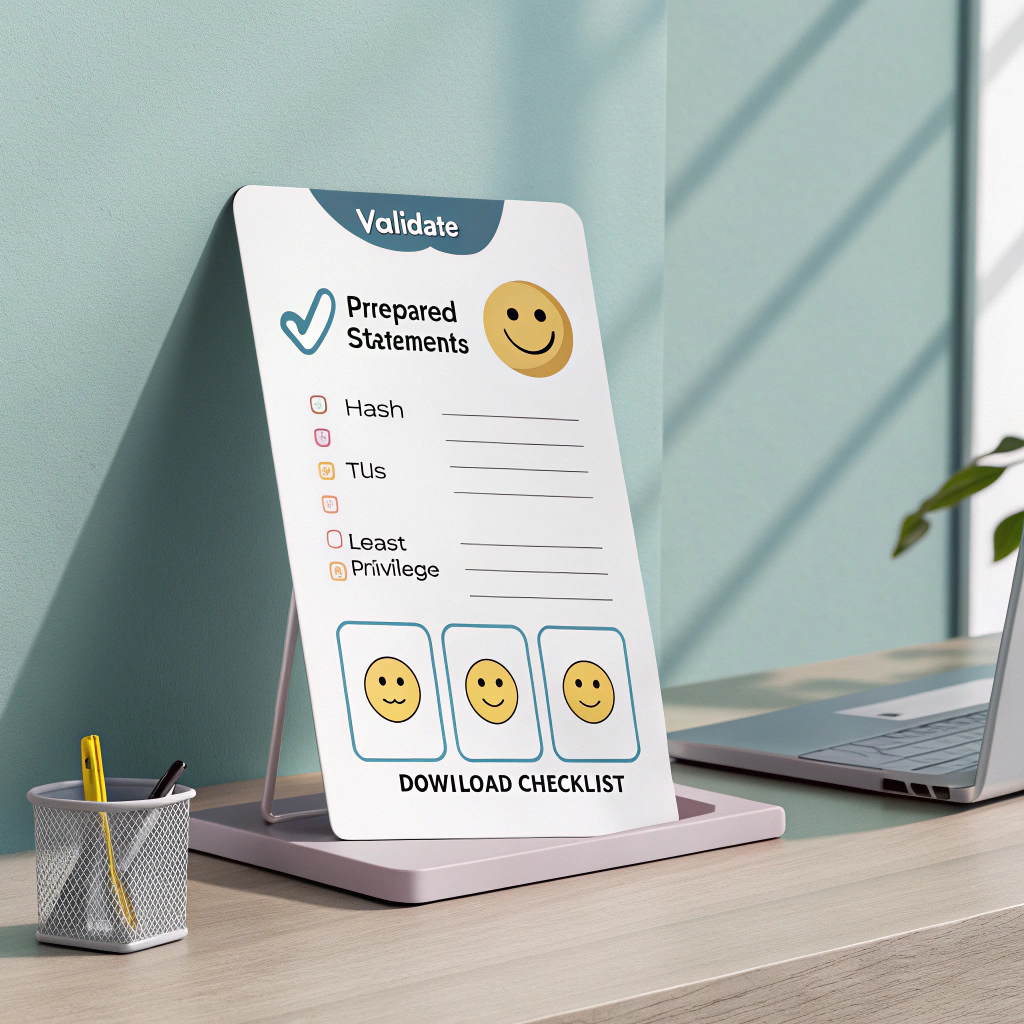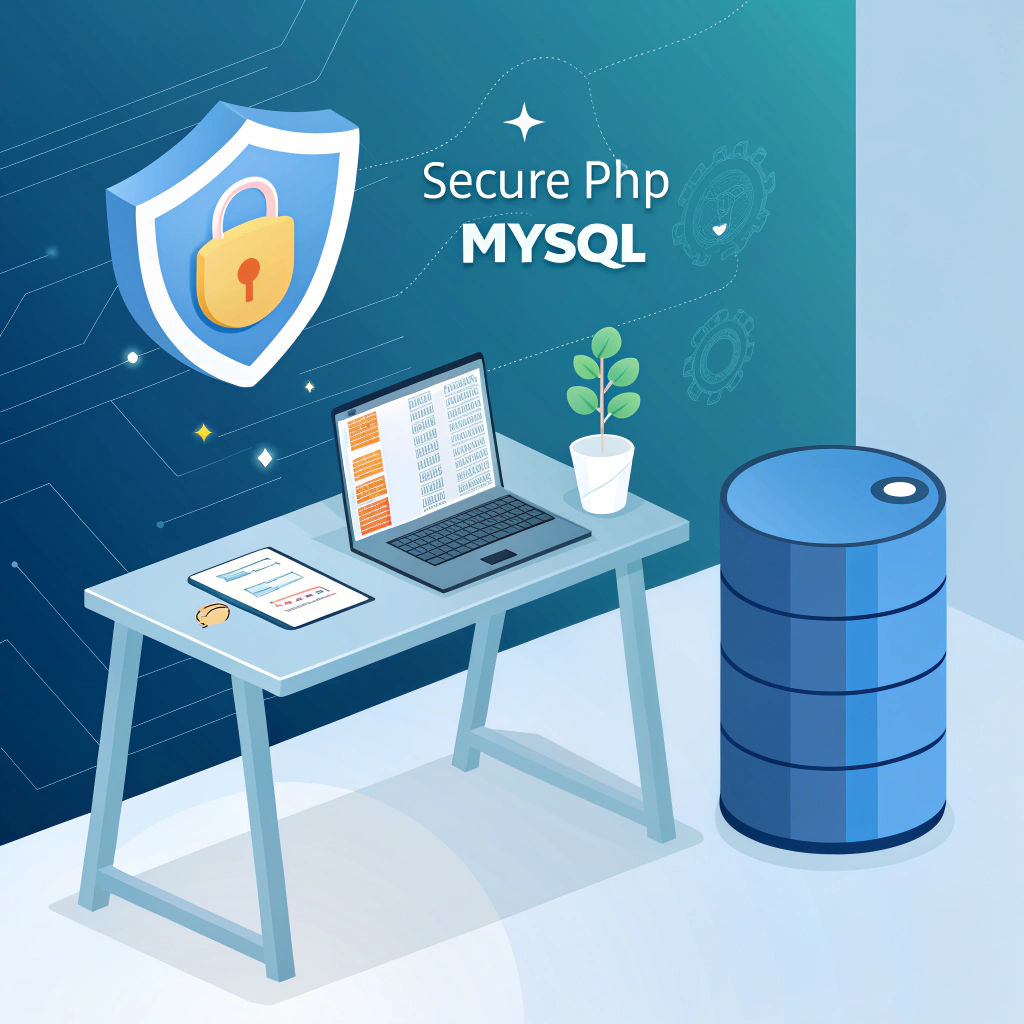Introduction — why “securely” matters — Step-by-Step Guide
Connecting a PHP form to a MySQL database is one of the most common tasks web developers do — but it’s also one of the riskiest when done casually. A single careless query can expose private user data or allow SQL injection attacks. In this guide I’ll show you a practical, security-first workflow: validate input, use prepared statements, hash secrets, enable encrypted connections, and verify everything before you go live. I’ll also share real tips I learned from debugging production issues so you don’t repeat the same mistakes.
Quick comparison: secure vs. unsafe approaches
| Approach | Risk | When to use |
|---|---|---|
| Direct string interpolation into SQL | High — SQL injection and data loss | Never for user input |
mysqli/PDO prepared statements | Low — parameterized queries prevent SQLi | Preferred for almost all cases |
| ORM with safe defaults | Low — if well-configured | Good for complex apps, use with care |
Escaping functions (mysqli_real_escape_string) | Medium — error-prone | Legacy code only; prefer prepared statements |
Step 1 — Validate & sanitize user input first
Never assume form input is harmless. Validation means checking that data meets format rules (email looks like an email, phone contains digits, dates valid). Sanitization removes or normalizes unwanted characters. Use whitelists where possible (allowed file types, acceptable characters) and limit lengths.
This is not just “best practice” — it’s a first line of defense recognized by security authorities. OWASP recommends validating input and handling exceptions as a basic control. OWASP Cheat Sheet Series
Practical tip: Validate on both client and server—but always enforce rules on the server side.

Step 2 — Use prepared statements (parameterized queries)
Prepared statements separate SQL logic from data. That prevents attackers from changing the intent of your query by injecting SQL inside input fields. Use PDO or mysqli prepared statements in PHP—both are supported and documented. PDO is especially flexible if you may switch database backends later. PHP+1
Example (PDO) — safe insert from an HTML form:
// db.php (connection)
$dsn = "mysql:host=DB_HOST;dbname=DB_NAME;charset=utf8mb4";
$pdo = new PDO($dsn, DB_USER, DB_PASS, [
PDO::ATTR_ERRMODE => PDO::ERRMODE_EXCEPTION,
PDO::ATTR_DEFAULT_FETCH_MODE => PDO::FETCH_ASSOC,
]);
// insert_form.php
$stmt = $pdo->prepare("INSERT INTO contacts (name, email, message) VALUES (:name, :email, :message)");
$stmt->execute([
':name' => $_POST['name'],
':email' => $_POST['email'],
':message' => $_POST['message'],
]);
Why prepared statements? They ensure user-provided values are never treated as SQL code. This is a top-recommended defense against SQL injection. OWASP Cheat Sheet Series

Step 3 — Hash passwords correctly (never store plain text)
If your form collects passwords, always hash them. PHP’s password_hash() and password_verify() are current best practices — they handle strong algorithms and salts for you. Don’t roll your own hashing scheme. PHP
Example (register/login):
// When registering
$hash = password_hash($password, PASSWORD_DEFAULT);
$stmt = $pdo->prepare("INSERT INTO users (email, password_hash) VALUES (:email, :hash)");
$stmt->execute([':email'=>$email, ':hash'=>$hash]);
// When logging in
$stmt = $pdo->prepare("SELECT password_hash FROM users WHERE email=:email");
$stmt->execute([':email'=>$email]);
$row = $stmt->fetch();
if ($row && password_verify($password, $row['password_hash'])) {
// authenticated
}
Pro tip: Use password_needs_rehash() when you upgrade algorithms or options so you can transparently rehash on next login.

Step 4 — Protect the connection: use TLS (encrypted connections)
Even when your queries are safe, data in transit can be intercepted on public networks. Configure your MySQL server and PHP client to use TLS/SSL so the connection between PHP and the MySQL server is encrypted. MySQL documentation explains how to enable and configure encrypted connections and TLS protocols. MySQL
Practical checklist for TLS:
- Generate server certificate + key, or use CA-signed certs for production.
- Configure MySQL server to require TLS for client connections (optional but recommended).
- Configure PHP PDO/MySQL client to verify server certificate and use TLS.
- Test with
openssl s_clientor MySQL client flags.
If you use managed MySQL (cloud provider), use the provider’s TLS instructions and enforced TLS endpoints (Azure, AWS RDS, etc.).
Step 5 — Limit privileges (least privilege principle)
Your web application should not connect to the database using a superuser or root account. Create a dedicated database user with only the permissions it needs (INSERT/SELECT/UPDATE for the relevant tables). If your app must run administrative operations, use a separate admin workflow or tool.
Example: a web user only needs INSERT and SELECT on contacts table — don’t give DROP or ALTER rights.
Step 6 — Sanity checks, logging & error handling
- Use try/catch and avoid echoing raw database errors to users; that leaks schema and queries.
- Log unusual events (failed queries, suspicious input patterns) to a secure log file.
- Rate-limit form submissions and consider CAPTCHA for public forms to reduce automated abuse.
- Implement CSRF protection for forms (tokens in sessions) to avoid cross-site request forgery attacks.
Step 7 — Secure file uploads and binary data
If your form accepts file uploads:
- Validate file type and extension using server-side checks (MIME sniffing plus extension).
- Store files outside the web root (or use a safe filename strategy) and serve them via a controlled script.
- Scan uploads with antivirus if data sensitivity warrants it.
Quick reference table: steps & why they matter
| Step | What to do | Why it’s important |
|---|---|---|
| Validate input | Use server-side checks, patterns, length limits | Reduces injection & processing errors |
| Use prepared statements | PDO or mysqli prepared queries | Prevents SQL injection. PHP |
| Hash passwords | password_hash() / password_verify() | Protects users if DB is leaked. PHP |
| Encrypt connection | Enable TLS/SSL for MySQL | Prevents eavesdropping. MySQL |
| Principle of least privilege | Create limited DB user | Limits damage if app is compromised |
| Logging & error handling | Don’t expose raw errors | Prevents information leakage |
A short real-world story (so you don’t waste time)
In one early project I used a visible error message during development that printed full SQL errors for debugging. A bot crawled the public form and recorded errors, revealing field names and table structure — it was an easy reconnaissance step. After that I switched to safe logging (server-side only), disabled error display, and added prepared statements. Lesson: showing internal errors publicly is a small convenience that can become a costly leak.
Extra tools & resources
- OWASP cheat sheets (SQL Injection and Input Validation) are excellent, practical references. OWASP Cheat Sheet Series+1
- PHP manual on PDO and prepared statements for code examples and options. PHP
- MySQL docs on encrypted connections for TLS configuration. MySQL

Final checklist before going live
- Run server-side validation and sanitize input.
- Replace all concatenated SQL with prepared statements.
- Ensure passwords are hashed (no plain text).
- Enable TLS for DB connections and verify server certificates.
- Use a limited DB user account.
- Turn off public error displays and log errors securely.
- Test with security tools (OWASP ZAP, SQLmap in a safe lab) before production.
Conclusion — small steps, big security gains
Connecting a PHP form to a MySQL database securely is a sequence of small, enforceable steps: validate, parameterize, hash, encrypt, and audit. Taken together they convert a fragile integration into a resilient, production-ready flow. If you follow the checklist above, you’ll eliminate the most common security pitfalls and build a foundation you can confidently scale.
Sources & further reading
- OWASP SQL Injection Prevention Cheat Sheet. OWASP Cheat Sheet Series
- PHP Manual — Prepared statements and PDO. PHP
- PHP Manual —
password_hash()and password functions. PHP - MySQL Documentation — Configuring encrypted connections (TLS/SSL). MySQL
- OWASP Input Validation Cheat Sheet. OWASP Cheat Sheet Series




Pingback: Build a Secure PHP Form with Validation: The Simple 2024 Guide - PaidScripts — Tech Education Hub: Coding, Courses & Student Resources